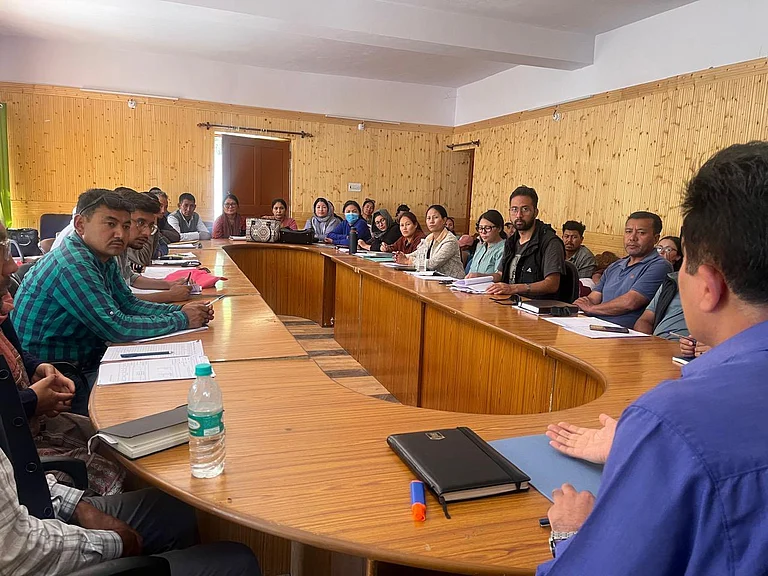Fear factor...
- Protests have rocked Srikakulam district, where NPCIL plans a 9,000 MW nuclear plant
- The plant will displace people from 12 nearby villages
- The project is estimated to cost Rs 1.2 lakh-crore
- NPCIL promises a “liberal” resettlement package. Activists counter the proposed plant is a Fukushima-like environment risk.
***
Earlier this year, sustained protests brought nationwide attention to the 2,640 MW thermal power plant proposed on precious wetlands in Sompeta in the coastal district of Srikakulam. Last month, the Andhra Pradesh High Court cancelled the allotment of 972 acres in the district to the Nagarjuna Construction Company. Now, Srikakulam is in the news again: tension is simmering around Pedda Kovvada and Chinna Kovvada villages, near which the Nuclear Power Corporation of India (NPCIL) plans an N-plant with six light water reactors of 1,500 MW each with know-how from General Electric and Hitachi, uprooting in the process people from 12 villages.
The fertile agricultural land of these villages yields paddy, coconut, banana, casuarina and corn. People also earn a living from fishing. Determined to keep their livelihood, locals led by voluntary groups and environment activists have been staging dharnas to oppose acquisition of land for the project. However, G.V. Ramesh, chief engineer of the NPCIL project, defends both the acquisition and nuclear power: “Our fossil fuels are running low and we need nuclear power. Of the 2,000 acres required for this plant, NPCIL has acquired 1,200. We need just 800 acres more.” He talks of a “liberal” resettlement package, which includes construction of some 2,000 houses, a boat jetty, schools, hospitals and a cold-storage facility for those displaced. As for the cries of “Don’t turn Kovvada into another Fukushima”, Ramesh says Fukushima lies in an area categorised as Seismic Zone VII, while Kovvada lies in Seismic Zone II, far less risky. “We’ll have 3G+ reactors that can withstand quakes, tsunamis and terror attacks,” he claims.
But E.A.S. Sarma, a former energy secretary, alleges that NPCIL is not giving out all the facts. He lists the hidden risks and sets out the extent of the project’s impact on people. Kovvada, he says, is close to a seismic faultline, so the “probability of a quake does exist”. And, he says, “Every N-plant has a zoning system that will uproot or otherwise affect people living in a 30-km radius. Up to 1.5 km from the plant is demarcated as an exclusion zone, up to 5 km as a sterilised zone, up to 16 km as an emergency planning zone. Finally, there’s an impact assessment zone (where radiation levels are regularly monitored) extending 30 km from the plant.” Another activist, V.S. Krishna of the Human Rights Forum, who has led agitations against power plants in Srikakulam, says, “We don’t need a quake or tsunami for an N-plant accident—since 1952, over 25 nuclear disasters worldwide have occurred because of structural, human or technical error.”
The Kovvada project still awaits clearance from the Union environment ministry, while a geotechnical assessment is on. NPCIL took journalists from Visakhapatnam and Srikakulam on tours of N-plants in Kalpakkam and other places to sell the idea that N-energy is clean and green, but Krishna calls it an attempt to stem hard-hitting media reports.
“The US has 104 N-plants, and radioactive tritium has leaked from 27 of them into local groundwater systems,” says Sarma. “Regulation in India is a lot worse than in the US. A 1,000 MW plant generates 30 tonnes of spent fuel annually. One can imagine the perils of tackling spent fuel from the 9,000 MW plant planned in Kovvada.” Krishna puts it more bluntly: “A fisherfolk’s paradise is all set to become a radioactive dump.”


























